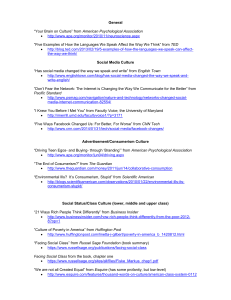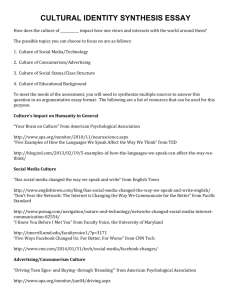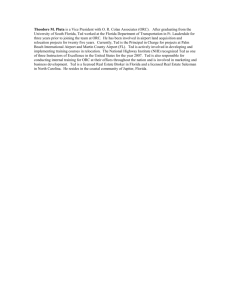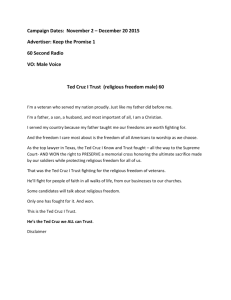TED Talk Formats: The Debate Rages
advertisement
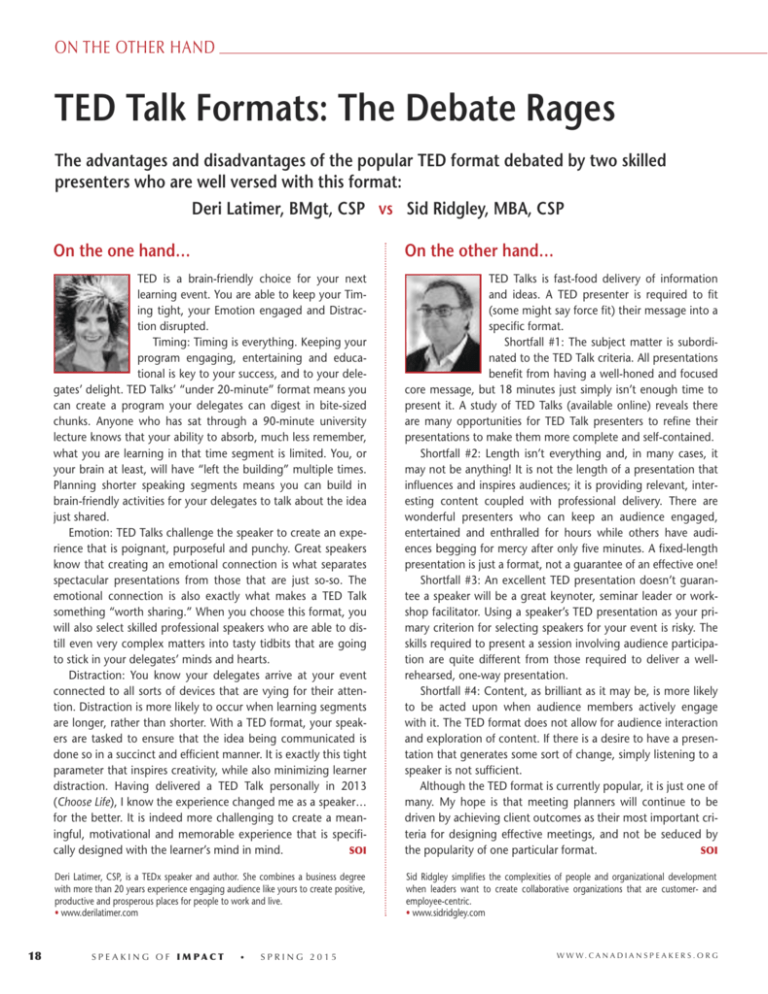
ON THE OTHER HAND TED Talk Formats: The Debate Rages The advantages and disadvantages of the popular TED format debated by two skilled presenters who are well versed with this format: Deri Latimer, BMgt, CSP vs Sid Ridgley, MBA, CSP 18 On the one hand… On the other hand… TED is a brain-friendly choice for your next learning event. You are able to keep your Timing tight, your Emotion engaged and Distraction disrupted. Timing: Timing is everything. Keeping your program engaging, entertaining and educational is key to your success, and to your delegates’ delight. TED Talks’ “under 20-minute” format means you can create a program your delegates can digest in bite-sized chunks. Anyone who has sat through a 90-minute university lecture knows that your ability to absorb, much less remember, what you are learning in that time segment is limited. You, or your brain at least, will have “left the building” multiple times. Planning shorter speaking segments means you can build in brain-friendly activities for your delegates to talk about the idea just shared. Emotion: TED Talks challenge the speaker to create an experience that is poignant, purposeful and punchy. Great speakers know that creating an emotional connection is what separates spectacular presentations from those that are just so-so. The emotional connection is also exactly what makes a TED Talk something “worth sharing.” When you choose this format, you will also select skilled professional speakers who are able to distill even very complex matters into tasty tidbits that are going to stick in your delegates’ minds and hearts. Distraction: You know your delegates arrive at your event connected to all sorts of devices that are vying for their attention. Distraction is more likely to occur when learning segments are longer, rather than shorter. With a TED format, your speakers are tasked to ensure that the idea being communicated is done so in a succinct and efficient manner. It is exactly this tight parameter that inspires creativity, while also minimizing learner distraction. Having delivered a TED Talk personally in 2013 (Choose Life), I know the experience changed me as a speaker… for the better. It is indeed more challenging to create a meaningful, motivational and memorable experience that is specifiSOI cally designed with the learner’s mind in mind. TED Talks is fast-food delivery of information and ideas. A TED presenter is required to fit (some might say force fit) their message into a specific format. Shortfall #1: The subject matter is subordinated to the TED Talk criteria. All presentations benefit from having a well-honed and focused core message, but 18 minutes just simply isn’t enough time to present it. A study of TED Talks (available online) reveals there are many opportunities for TED Talk presenters to refine their presentations to make them more complete and self-contained. Shortfall #2: Length isn’t everything and, in many cases, it may not be anything! It is not the length of a presentation that influences and inspires audiences; it is providing relevant, interesting content coupled with professional delivery. There are wonderful presenters who can keep an audience engaged, entertained and enthralled for hours while others have audiences begging for mercy after only five minutes. A fixed-length presentation is just a format, not a guarantee of an effective one! Shortfall #3: An excellent TED presentation doesn’t guarantee a speaker will be a great keynoter, seminar leader or workshop facilitator. Using a speaker’s TED presentation as your primary criterion for selecting speakers for your event is risky. The skills required to present a session involving audience participation are quite different from those required to deliver a wellrehearsed, one-way presentation. Shortfall #4: Content, as brilliant as it may be, is more likely to be acted upon when audience members actively engage with it. The TED format does not allow for audience interaction and exploration of content. If there is a desire to have a presentation that generates some sort of change, simply listening to a speaker is not sufficient. Although the TED format is currently popular, it is just one of many. My hope is that meeting planners will continue to be driven by achieving client outcomes as their most important criteria for designing effective meetings, and not be seduced by SOI the popularity of one particular format. Deri Latimer, CSP, is a TEDx speaker and author. She combines a business degree with more than 20 years experience engaging audience like yours to create positive, productive and prosperous places for people to work and live. • www.derilatimer.com Sid Ridgley simplifies the complexities of people and organizational development when leaders want to create collaborative organizations that are customer- and employee-centric. • www.sidridgley.com S P E A K I N G O F I M PAC T • SPRING 2015 W W W. CA N A D I A N S P E A K E R S . O R G

